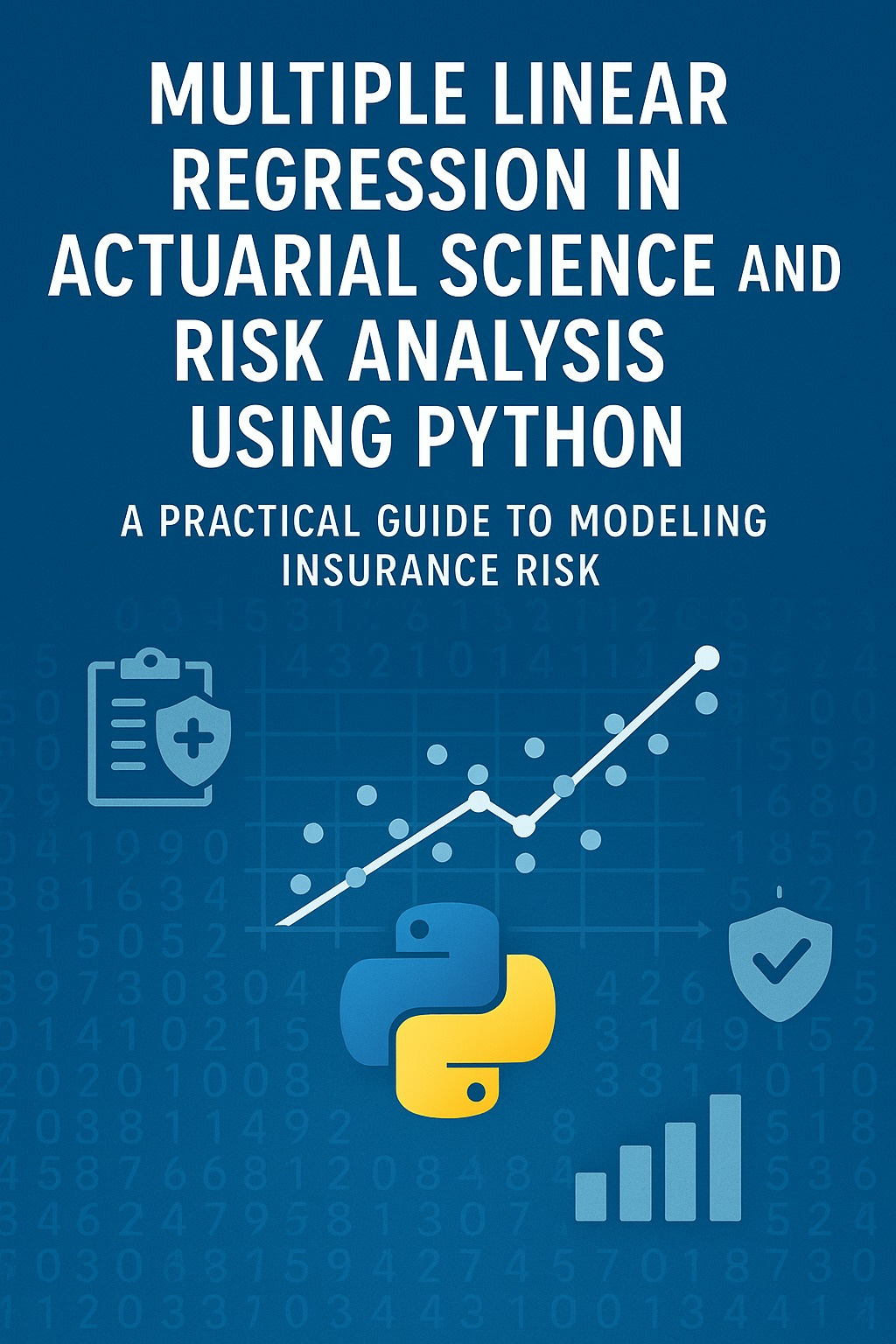Multiple Linear Regression in Actuarial Science and Risk Analysis Using Python: A Practical Guide to Modeling Insurance Risk
This article provides a detailed guide to using multiple linear regression in Python to model insurance risk, helping actuaries gain analytical insights into pricing, reserving, and risk forecasting.
Article Outline:
Introduction Explain the importance of predictive modeling in actuarial science and how multiple linear regression helps quantify insurance risks, such as claim costs, lapse probabilities, and customer segmentation. Introduce Python as a versatile tool for actuarial data science.
Overview of Multiple Linear Regression in an Actuarial Setting Define the multiple linear regression model, describe its assumptions, and discuss its relevance to actuarial functions such as pricing, reserving, and underwriting risk analysis.
Applications of Multiple Regression in Insurance and Risk Analysis Discuss specific use cases in the insurance domain, including modeling policyholder claim behavior, analyzing drivers of insurance cost, and forecasting financial exposure for reserving.
Designing an Actuarial Dataset for Risk Modeling Outline the typical structure of insurance data, including key variables such as policyholder demographics, sum insured, coverage type, policy duration, and claim history. Explain how these variables influence risk and premium calculation.
Data Preparation and Feature Engineering Using Python Demonstrate how to clean, encode, and transform actuarial data in Python using pandas and NumPy. Cover handling categorical variables, missing values, feature scaling, and interaction terms.
Building a Multiple Linear Regression Model in Python Use
scikit-learnorstatsmodelsto fit a regression model, including code for training, testing, and extracting coefficients. Compare these packages briefly in terms of model interpretation and statistical output.Model Interpretation for Actuarial Insight Translate model coefficients into actuarial reasoning: how each factor impacts claim amount or risk score, and what the practical implications are for underwriting, pricing, or portfolio management.
Validation, Diagnostics, and Model Evaluation Evaluate model accuracy using metrics such as RMSE and R-squared. Use diagnostic plots to assess linearity, residual distribution, and multicollinearity. Highlight common pitfalls and how to detect them.
Best Practices for Actuarial Modeling in Python Discuss the importance of version control, model documentation, reproducibility, and integrating with actuarial workflows such as dashboards or pricing engines.
Conclusion Summarize the strengths of using Python and linear regression in actuarial science. Encourage further exploration into GLMs, machine learning models, and integration with actuarial valuation systems.
Subscribe to download the full article …
Keep reading with a 7-day free trial
Subscribe to AI, Analytics & Data Science: Towards Analytics Specialist to keep reading this post and get 7 days of free access to the full post archives.




